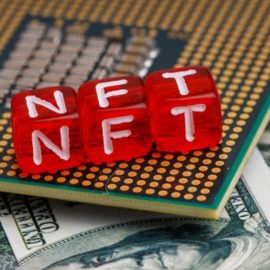

This article is an excerpt from the Shortform book guide to "Contagious" by Jonah Berger. Shortform has the world's best summaries and analyses of books you should be reading.
Like this article? Sign up for a free trial here .
What is discount marketing? How can you create effective discounts that make customers spend more?
People love to save money, so creating an attention-grabbing discount is an effective marketing strategy. This discount can’t just be an “okay” saving that doesn’t really stand out. If it is, people will take advantage of the deal themselves, but probably won’t tell others about it. For a discount to be worthy of sharing, it needs to be truly amazing.
Find our guide to effective discount marketing below.
Creating a Discount Marketing Strategy
The first way you can give your product or service practical value is to apply an amazing discount. Make your product appealing and shareable by making it a money-saver.
But what makes a discount “amazing”? In general, amazing discounts usually have three principles:
- They represent a big saving.
- Their availability is limited: for instance, the discount is short-term, or only for certain customers.
- They’re obvious: they’re well-advertised and easy to find out about.
Make Your Discount Big
For a discount marketing strategy to be amazing, it has to be big. For instance, a 5% discount will be perceived as an okay deal, not an amazing one. It doesn’t knock that much off the original price, so it’s not that attractive. A 50% discount, however, is a pretty big saving and is therefore more likely to impress customers.
Customers are more likely to share information about a big discount for two reasons. First, a big discount is more helpful than a small one. To many people, sharing information about a 5% discount doesn’t seem worth it. It’s not going to save their loved ones much money, so what’s the point in telling them about it? However, sharing information about a 50% discount is incredibly helpful—it’ll help the person’s loved ones make a huge saving. Therefore, this larger discount is more likely to be shared.
Second, big discounts are remarkable. They’re surprising, impressive, and exciting—and therefore worthy of remark. As you learned in Chapter 1, people love to talk about remarkable things because they’re a source of social currency. They’re going to share information about your remarkable deal because they know doing so will make them look good.
Provide a Reference Point
When placing a big discount on a product, remember that people judge how good a deal is using the item’s original price as a reference point. They like to know the precise monetary difference between the item’s original price and its new price.
Because of this, simply stating that your product has a big discount—for instance, putting a label on the product saying “50% off”—might not be enough to entice customers. To get them truly excited about the deal, show how much more they could have paid, not just what they will pay. You can do this by making sure you clearly display your product’s original price next to its sale price. This gives customers the reference point they need to determine whether your deal is good or not.
Diminishing Sensitivity
Another reason why keeping your discounts big is important is the principle of diminishing sensitivity. This principle states that the exact same monetary discount can seem good or bad depending on its proportional relationship to the original price of the discounted item.
Take the example of a $10 discount. If the original price of the product was small—say, $35—this discount will seem like a good deal because proportionally, it knocks off a big chunk of the price. However, if this same $10 discount is applied to a product that cost $3500 originally, it’s not going to seem like a good deal. Proportionally, this is barely a discount at all.
The moral of this principle is that you can’t just place the same monetary discount on every product. For example, don’t apply a blanket “$10 off” discount to all of your items. While this deal might work for cheaper products, it’ll seem like a bad deal on more expensive ones. Instead, keep your discount large in proportion to your product’s original price. If you don’t, people won’t be impressed by the deal, and they won’t share it.
If you approach the process of devising a deal with the mindset that your deal needs to be big, you’ll naturally avoid this issue. You won’t even contemplate putting a small monetary discount on an expensive product.
Limit Availability
The second way to make your discount marketing strategy amazing is to ensure that the discount isn’t too readily available. For example, don’t run a constant discount on a particular product. If you do, people will start to see the item’s lower price as the norm and not as a great deal. The deal will no longer seem special.
Instead, find a way to make your discount scarce or exclusive. For instance, you could make it available for a limited time only, or a “members only” deal. Another option is to add a quantity limit per customer for the discounted item, so that their ability to purchase it is curbed.
Adding scarcity or exclusivity to a deal will make it look more valuable—like a special opportunity that can’t be missed. People tend to think that a deal must be really good if a store limits access to it. For instance, customers might think that a store has added a quantity limit to a discounted item because the discount’s popularity has led to the product almost selling out. They may decide that if the discount is that popular, it must be good.
When people believe that deals are valuable in this way, they’re more likely to tell others about them. Likewise, as you’ve already learned, making something seem scarce or exclusive increases its social currency. This also makes people more likely to talk about it.
Make the Discount Obvious
The final attribute of an amazing discount marketing strategy is that the discount is obvious and easy to observe. Things need to be publicly visible if people are going to share information about them. Discount marketing is no exception to this.
The majority of discounts are stated quite obviously. Stores put stickers on items to indicate to customers that they’re on sale. They display huge posters highlighting their best deals.
However, sometimes stores make the mistake of hiding the value of their discounts. A major example of this is store loyalty cards: cards on which people accrue points if they spend enough at the shop. They can then cash in these points to get discounted goods.
These cards do have practical value. They can save customers a lot of money. However, it’s not easy to share that value with other people. Most people only find out how many points they accrue when it’s printed on their receipt, and they’re unlikely to show their receipts to other people. Therefore, the word about these cards never gets out.
A better approach to publicizing the value of store cards might be ringing a bell when people use their card to get a discount of a certain size—for instance, $25 or over. Or when a customer arrives at the checkout, they could be greeted by a screen that tells them how much customers have saved today using their loyalty cards. These actions will show customers the practical value of the cards. They’ll be more inclined to get a card and tell other people about them, too.

———End of Preview———
Like what you just read? Read the rest of the world's best book summary and analysis of Jonah Berger's "Contagious" at Shortform .
Here's what you'll find in our full Contagious summary :
- Why some new products and ideas gain widespread popularity while others fail
- The six principles to making your product or idea contagious
- The importance of word of mouth in marketing






